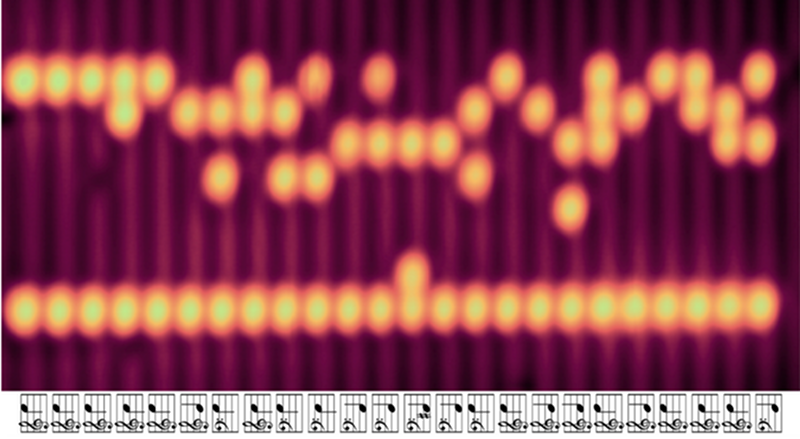We don’t usually think of a microscope as an active instrument, but researchers in Canada have used a scanning tunneling microscope to remove or replace single hydrogen atoms from the surface of a hydrogen-passivated silicon wafer. If the scientific paper is too much to wade through, there’s an IEEE Spectrum article and a video that might run on the 6 o’clock news below.
As usual with these research projects, there is good news and there is bad news. The good news is that — in theory — a memory device made using hydrogen lithography could store 138 terabytes per square inch. That’s enough, apparently, to store the entire iTunes catalog on a quarter. The bad news? Well, right now this takes exotic lab equipment at very low temperatures and pressures.
Hydrogen bonds with the silicon, but the scanning tunneling microscope probe can be energized in a way that it rips a particular hydrogen atom away, exposing a “dangling bond” on the corresponding silicon atom. The STM can also read the memory back.
Apparently, the team thinks the system would be stable at higher temperatures based on prior work with similar materials. They also think they could find a way to relax the ultra-high vacuum requirement, although it was less clear whether they had a realistic plan for that. Another atomic-scale memory technology that uses chlorine and copper isn’t stable for long, also requires cold temperatures and delivers a lower density.
Right now the technique isn’t very fast. A song from Mario Brothers took 192 bits with a write time of 250 seconds. Part of what makes it interesting, though, is they have a way to automate the process. That is, there are changes in factors such as the current draw through the probe that indicate when a hydrogen atom successfully attached or detached. So while this is far away from being practical today, we could see that one day all of Archive.org might be in a small refrigerated case full of this technology.
This isn’t the first time we’ve seen atomic memory using this kind of equipment but with different atoms. We’ve also looked at scanning tunneling microscopes before and there are several STM builds over on Hackaday.io.















This just makes me feel old,
https://en.wikipedia.org/wiki/IBM_(atoms)
This sounds a lot like playing with atomic Williams tube memory.